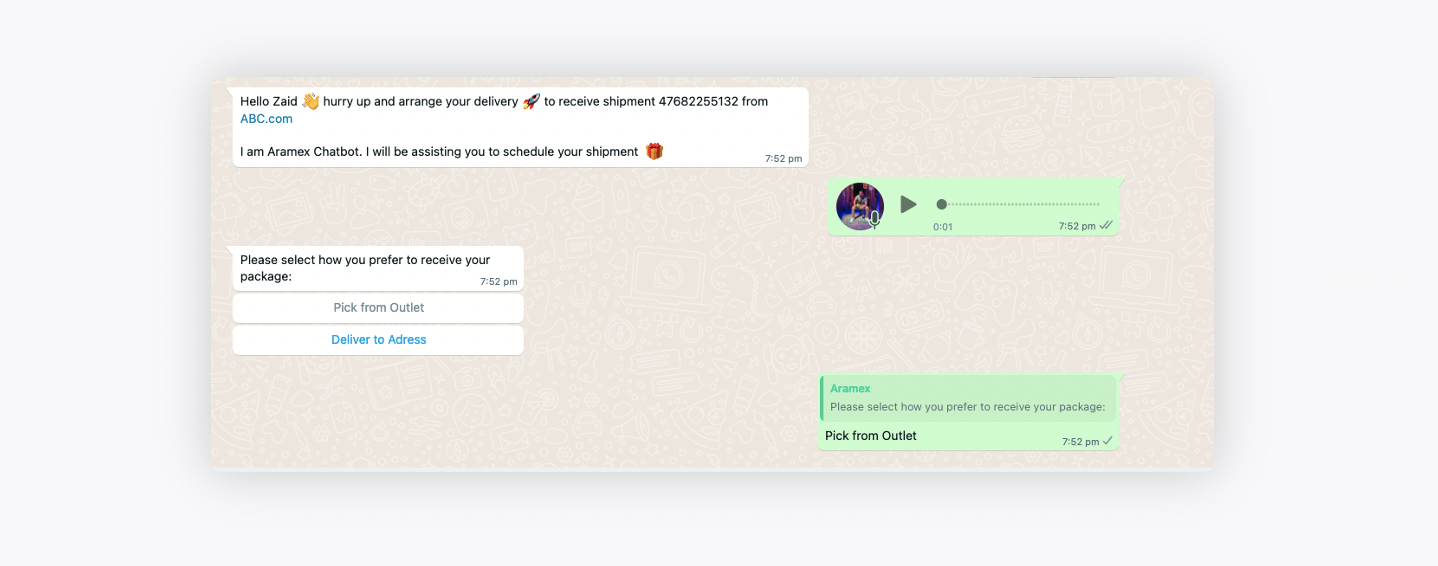FAQs
No tags available
Updated
2 years ago
, by [Redesign] Sprinklr Help Center
Commonly Asked FAQs
Below are some frequently asked questions about Conversational AI:
To raise any issues related to the Conversational AI setup, you can reach out to the Product/Support Team at tickets@sprinklr.com with the following details to assist them in quick debugging:
1. Describe the issue in detail.
2. Support your issue with the following details:
Message ID
Case ID
Conversational AI Application
Name
URL
Dialogue Tree ID
Name
URL
Server: Prod/Prod2/Prod3/Prod4/Prod8/Prod11
Partner ID
Customer
Workspace
Screenshots (Optional)
Yes, you can route to a dialogue tree that is not deployed in deployment settings. The dialogue tree just needs to be active. The dialogue tree to which you route is considered a part of the dialogue tree in which you route. Basically, if you are routing to Bot B in Bot A, then you can assume the complete flow of Bot B within Bot A only in place of that action.
One of the possible reasons for this could be the absence of Bot Input Language in the bot trigger action in the bot rule.
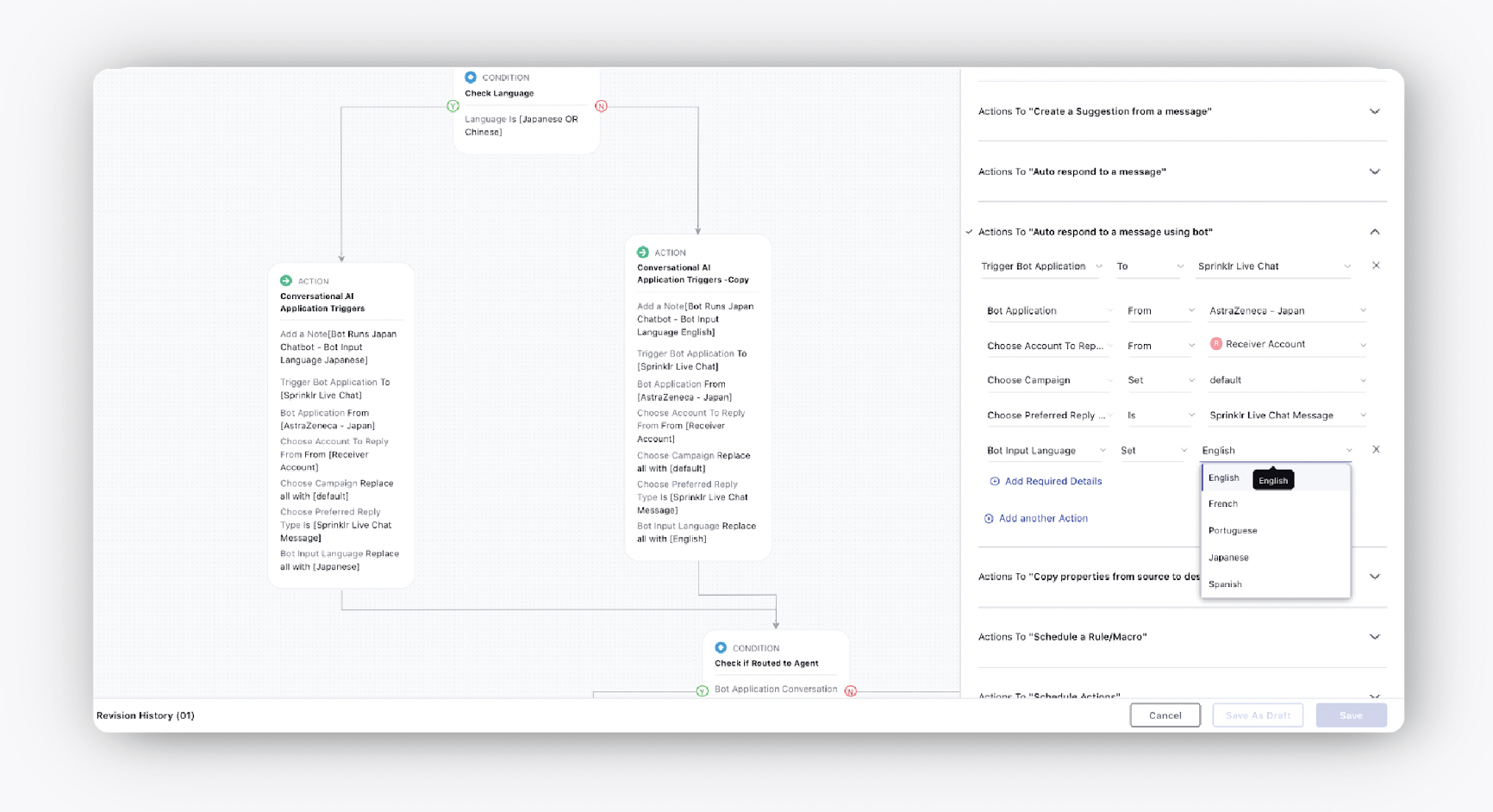
This is especially important when you are configuring a Conversational AI application in a non-English language. It’s important to add that language in the Bot Input Language action.
If while adding the Bot Input Language, you don’t see that language in the dropdown, you can contact support at tickets@sprinklr.com to get the language added.
User Reply Timeout is basically the amount of time the bot will wait for the user to reply after a bot reply. If the time is exceeded you can send a response such as "are you still there".
You can add a Bot Response Delay on the Bot Reply/asset you want to be delayed, but the maximum allowed delay is 5 seconds. If you want to add delay for more than 5 seconds, then add a User Reply Timeout on the node before it and from that node, connect the bot reply you want to send with a delay using a User Reply Timeout path. For example, you send a Bot Reply A and then you want to send Bot Reply B after 10 seconds of Bot Reply A - so for this, you'll need to add a User Reply Timeout to Bot Reply A (of 10 seconds) as shown below and then configure a User Reply Timeout path which would connect to Bot Reply B.
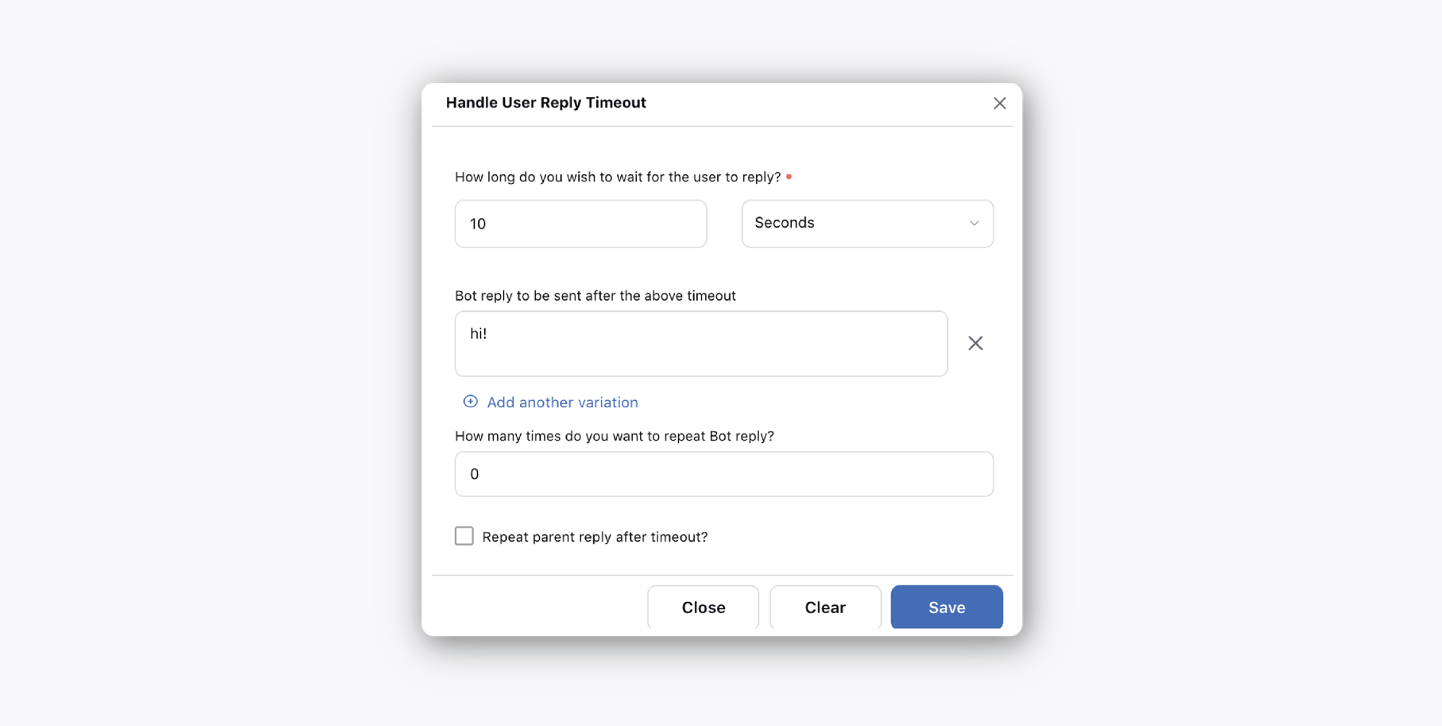
Note: “Bot reply to be sent after the above timeout” should not be empty as shown in the above screenshot. You can add 0 in “How many times do you want to repeat Bot reply?”, so that this reply never actually gets published.
Yes, you can push a Conversational AI application from Sandbox to production. So, it's possible to build Conversational AI applications in Sandbox.
Yes, it is possible to deploy a FAQ bot in deployment settings. You can add it as a qualifying bot or an issue type bot.
Yes, it is possible. You’ll need to add a Twilio account. Another thing to note is that SMS is a text-only channel (text templates only).
You can refer to these scenarios to understand how they will work with each other.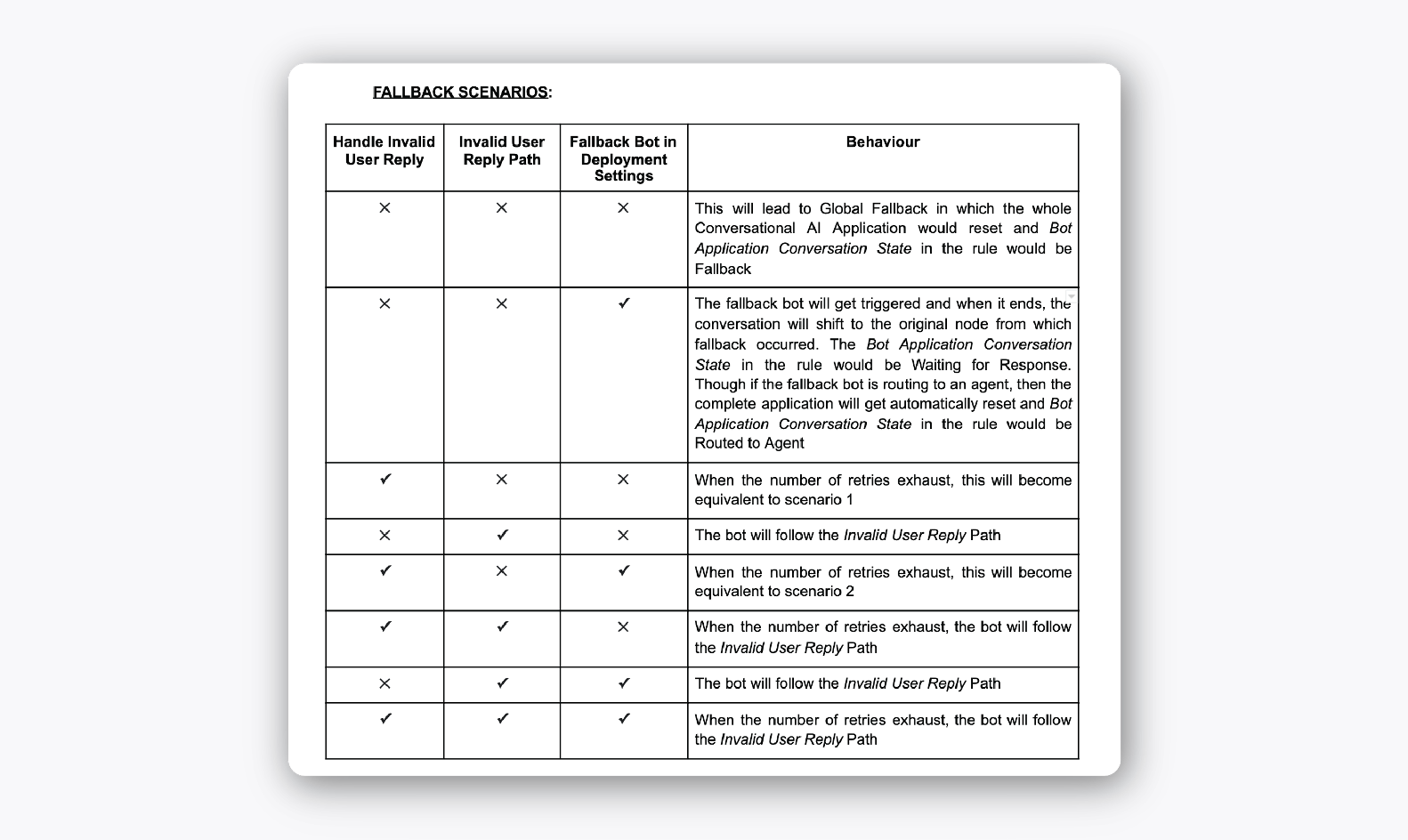
Configuring intents in buttons works but it does not work for entities. So rather than configuring entities in the asset button, configure them as a user reply.
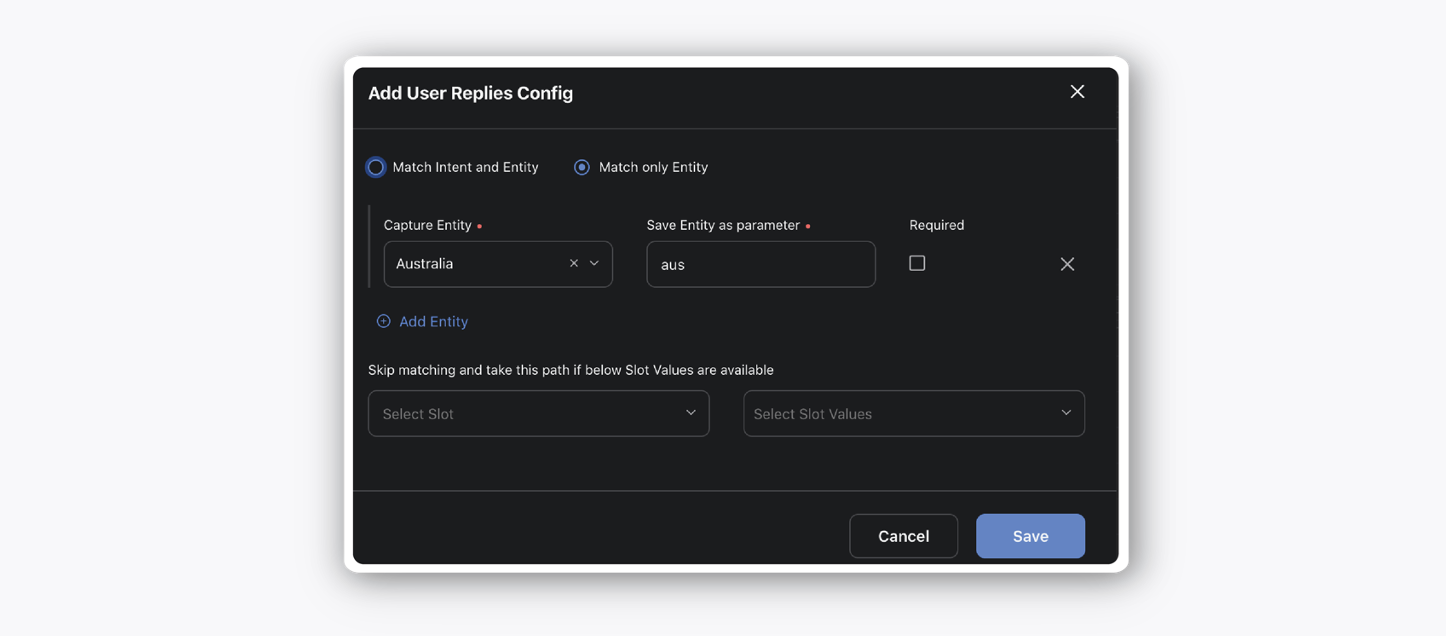
This is due to the Twitter Policy on test (less followed) handles. After repeated testing by the same user, Twitter starts recognizing configuration as Spam and blocks the conversational flow. The only way to solve this is to create a new test account or distribute testing such that it doesn’t cross the limit per user set by Twitter. The same holds true for Facebook test pages as well.
To get this capability enabled, please work with your Success Manager.
If multiple Intents are detected on a user expression, which leads to multiple Issue Types being detected, then, in this case, the Issue Type corresponding to the Primary Intent would be triggered first. However, you can override this behavior by giving priority to intents as per your requirement. In this case, the Issue Type corresponding to the Intent with the higher priority would be triggered first. Priority order can be given from UI to the Intents which are created from UI, however for the Intents enabled from backend, you need to reach out to the Care-Product/AI/Support Team with the priority order of the Intents.

The changes made in the trigger filter are not reflected until you open the dialogue tree and click on “Save and Deploy” after making the changes, therefore whenever you make changes in the trigger filter, always remember to open the dialogue tree and click on “Save and Deploy”.
The most common reason for this could be the AI Intent Model not being deployed on the Production Environment. Therefore, if there are AI Intents that are enabled from the backend, then you need to inform the AI Team when shifting the setup from Sandbox to Production along with the Partner IDs for both the environments so that they can enable the AI Intent Model in the Production Environment as well.
This mostly happens when the Asset Template has not been created properly. There could be these 2 possible issues with the Asset Templates:
A. There are extra spaces at the beginning or end of the button text.
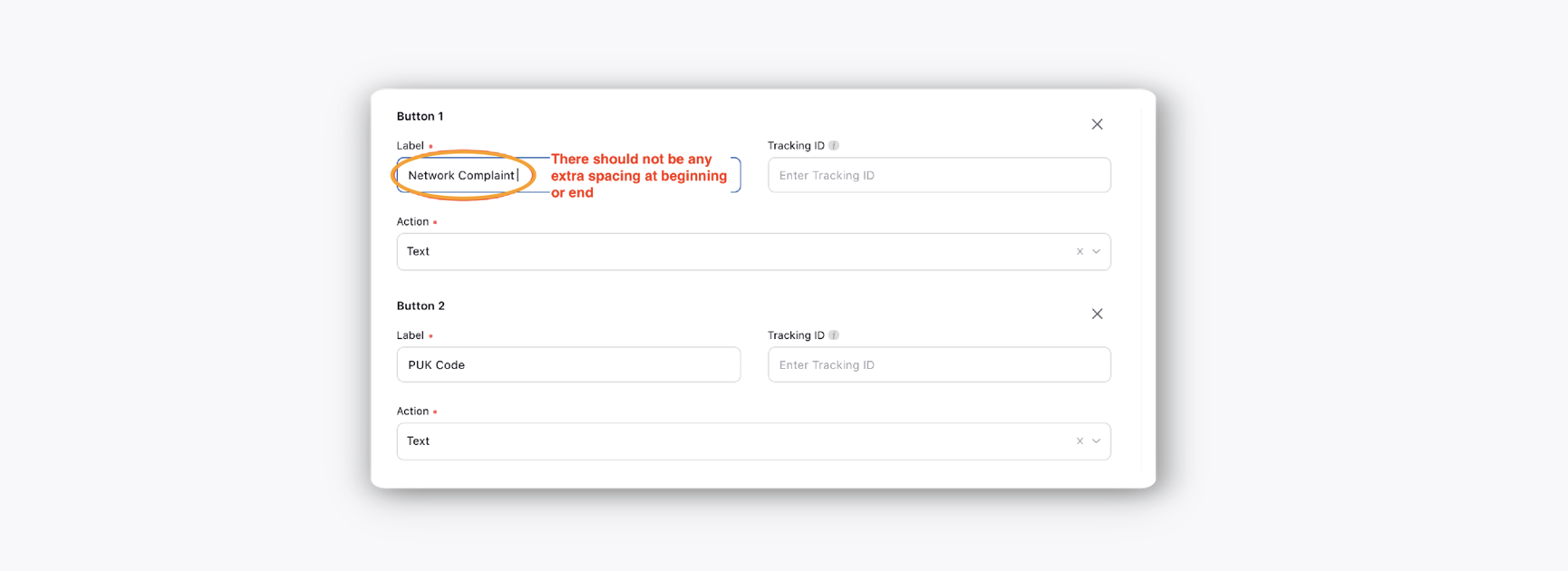
B. The number of characters in the button text is exceeding the channel limit. For details of channel-specific templates, you can refer to this doc. You can check for these two things first and if the issue still persists, then you can reach out to the Support Team with relevant details.
Here, you should note that the state of Conversational AI Application is not fallback even if you are in a Dialogue Tree which is deployed as a Fallback Bot. The state of Conversational AI would be the same as for any other Dialogue Tree depending upon the actions configured in the Fallback Dialogue Tree.
If the Fallback Dialogue Tree is routing to an agent, then the state of the Conversational AI application will be routed to the agent.
If the Fallback Dialogue Tree is a multi-step bot with bot replies & user replies, then the state of the application will be waiting for user response after the first bot reply.
Whereas an interesting point to note is that if the Fallback Dialogue Tree “ends”, then the state of the application is not Conversation Ended, but it is waiting for user response because once a Fallback bot ends, the conversation shifts to the original node of the parent bot from which the fallback had occurred.
Here, in Conversational AI Application, for the exact matches associated with the intents to be working fine, you have to add an additional field of Bot Input Language in the action to trigger the Conversational AI Application, as shown in the image below.

Here you have to choose the same language which has been selected while creating the Intents and if the intents have exact match expressions in multiple languages, then you need to apply the check for language before the action to trigger the Conversational AI Application and select Bot Input Language in each action accordingly (as shown in the screenshot below).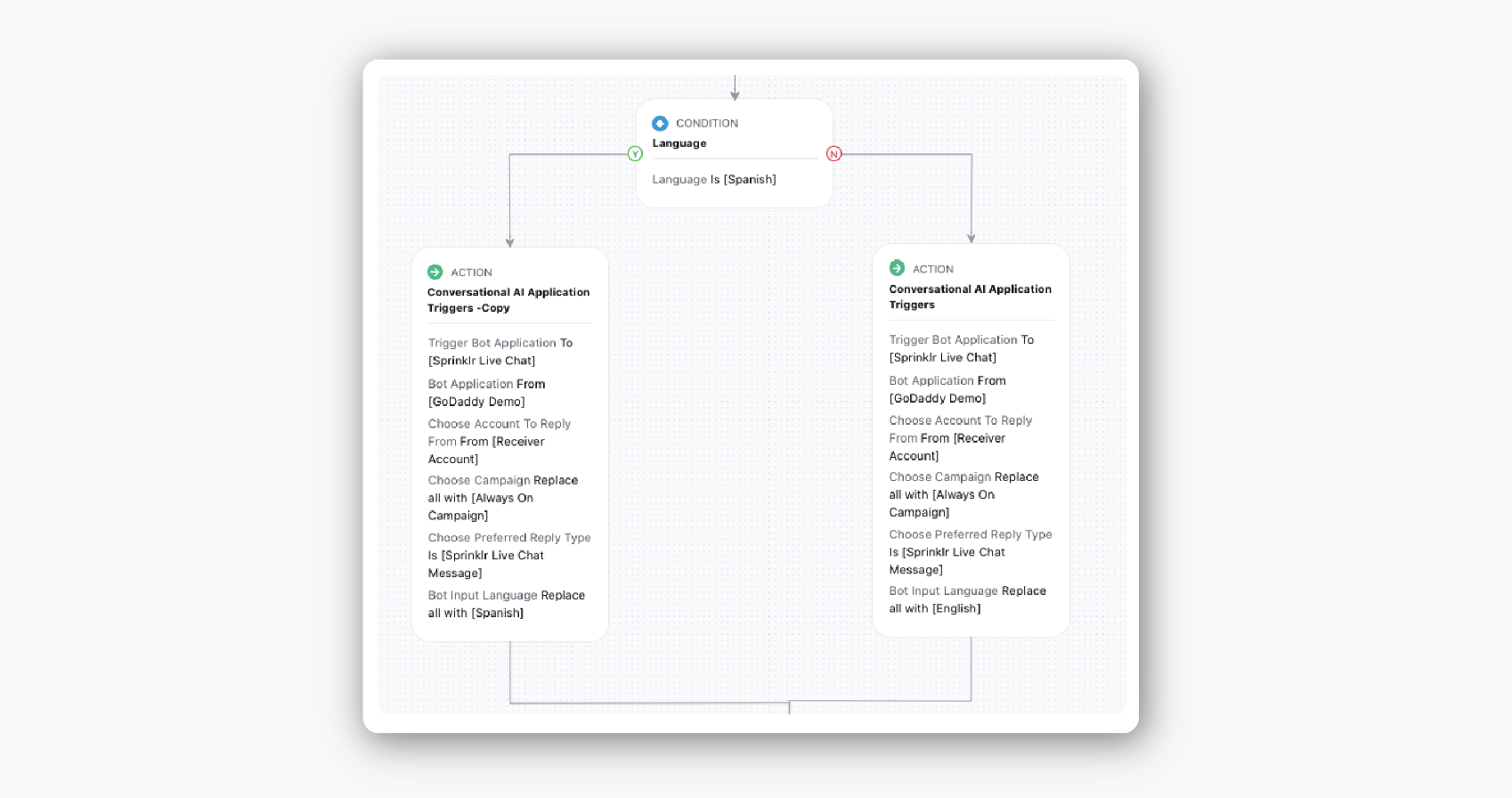
Conversation context is the issue type that is currently running or the current intention of the user for triggering the bot. A conversation ends when this initial intention of using the bot is over.
Route to bot is just using another bot journey inside a bot.
Handover is closing the previous conversation and starting the new bot via Handover. Conversation context of the previous bot is not carried forward to this new bot.
No, the conversation will not return to bot1 or bot2, because when the conversation context is handed over from Bot2 to Bot3, the context of Bot1 and Bot2 is over and the conversation context is of Bot3 only.
No, the intents/entities that were created earlier from the Intents and Entities section of the old Bot Builder will still be visible and editable from the Intents and Entities section. However, those will not be visible under any Conversational AI Application.
For any new intents and entities, you can create them directly within your Conversational AI Application under the Build section.
Yes. To learn more about getting this capability enabled in your environment, please work with your Success Manager.
